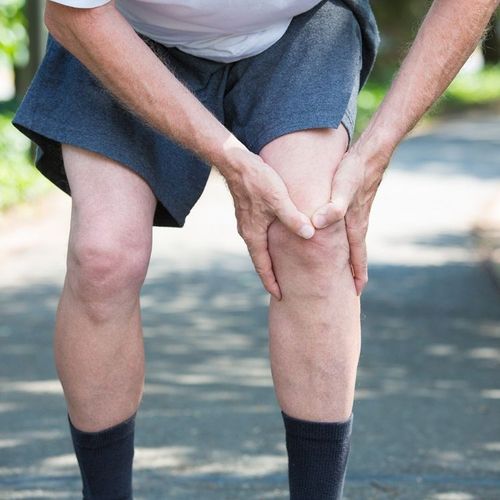More than 21 million Americans suffer from osteoarthritis, a degenerative joint disease. That's the bad news.
The good news—we know more about the disease now than ever before, including how to slow its progression.
CAUSES
There are many different forms of arthritis. Osteoarthritis is the most common form. When you have osteoarthritis, the cartilage that cushions the ends of the bones in your joints deteriorates. Over time, the cartilage may wear down completely, leaving bone rubbing on bone.
Osteoarthritis commonly affects the fingers, neck, lower back, hips and knees. The exact cause of the disease isn't known, but tbefollouting are key risk factors...
- Advancing age. People 45 years and older are at greater risk for the disease. In older people, the joint cartilage contains less fluid and may become brittle, which leads to deterioration.
- Family history. Heredity plays a role, especially in osteoarthritis of the hands. This particular type of osteoarthritis, which ultimately gives the fingers a gnarled appearance, is more common in women whose mothers also suffered from the condition.
- Previous injury. Not every joint injury causes a problem, but if you have had torn cartilage or a disruption of the ligaments in a major joint, then you are more likely to develop a problem in that area.
- Obesity. Being overweight puts unnecessary stress on weight-bearing joints-particularly hips and knees.
EARLY WARNINGS
Osteoarthritis often progresses slowly, but there can be early signs…
- Joint pain during or after use, after a period of inactivity or during a change in the weather.
- Swelling and stiffness in a joint, particularly after using it.
- Joint instability, especially noticeable in the knees, which can even take on a knock kneed or bow-legged appearance as the cartilage deteriorates.
- Bony lumps. With osteoarthritis of the hands, these lumps (called Heberden's nodes and Bouchard's nodes) can appear on the middle or end joints of the fingers or at the base of your thumb.
PROTECT YOURSELF
There is no known cure for osteoarthritis, but lifestyle measures can help. Tb preuent or slou progression of the disease…
- Lose weight. While it's obvious that running and jumping can be hard on the joints, if you're overweight, even everyday tasks such as walking and climbing stairs can be problematic. Shed pounds, and you can ease the pressure on your weight-bearing joints.
- Exercise. Choose low-impact activities, such as walking, cycling and swimming, so that you don't put too much pressure on your joints.
If you've had a knee injury it also pays to do quadricep-strengthening and hamstring stretching exercises so that those muscles can better stabilize and operate the knee.
New finding: A study published in Arthritis & Rheumatism shows that people with knee osteoarthritis who exercised regularly for as long as 18 months had less disability and were able to walk much greater distances than people who dropped out of the program.
Check with your doctor before beginning a regular exercise program. He/she may recommend working with a physical therapist who can design an exercise program to meet your specific needs.
MEDICATIONS
Osteoarthritis sufferers have a range of treatment options…
- OraI medications. The most commonly used drugs for osteoarthritis are pain relievers, such as acetaminophen (Tylenol) and nonsteroidal anti-inflammatory drugs (NSAIDs), which fall into two categories…
- Nonselective NSAIDs. Drugs such as aspirin, ibuprofen (Advil), diclofenac (Voltaren) and naproxen (Aleve) are commonly used to treat the symptoms caused by inflammation (pain, swelling, redness, etc.), and they work very well for some people. However, long-term use of NSAIDs can cause problems ranging from stomach upset to gastrointestinal bleeding.
- Selective Cox-2 inhibitors. These drugs were originally touted as being less likely to cause gastrointestinal problems than traditional NSAIDs, but most have been pulled from the shelves because of potentially devastating side effects. Rofecoxib (Vioxx), for example, was pulled after a study showed that the drug predisposed people to heart attacks. Currently, there's only one Cox-2 inhibitor, celecoxib (Celebrex), still in use. Celebrex does not seem to cause the same heart risks as Vioxx.
New finding: In a paper published in the Journal of tbe American Medical Association, three researchers at Harvard University examined 11,4 clinical trials of Vioxx, Celebrex and other drugs. The researchers found that Celebrex was associated with lower blood pressure readings (unlike Vioxx, which was associated with higher blood pressure readings).
- Injections. In cases where a particular joint is acutely inflamed, a physician might opt to inject a corticosteroid preparation into the joint. This can provide rapid relief for up to several months, but long-term use of corticosteroids can be harmful to tissue and bones.
SUPPLEMENTS
Glucosamine and chondroitin sulfate play a role in the structure of cartilage and other connective tissue—and you can get them over-the-counter in supplement form. A massive study, known as the "Glucosamine/Chondroitin Arthritis Intervention Trial (GAIT)," coordinated by the University of Utah School of Medicine, found that in patients with moderate to severe pain, glucosamine and chondroitin provided statistically significant pain relief. However, the combination did not work any better than a placebo for the overall group of patients.
Also, a study suggests that glucosamine could potentially slow the progression of osteoarthritis of the knees, although not all studies of this supplement confirm this finding. More research is needed, but the supplements seem safe to use if you choose to try them.
Exception: People who are allergic to shellfish should steer clear of glucosamine, which is made from shellfish.
JOINT REPLACEMENT
In joint-replacement therapy (arthroplasty), the damaged joint is removed and replaced with a plastic or metal prosthesis. Joint replacement can be very effective, particularly for the major weight-bearing joints, such as the hips and knees, allowing you an active, pain-free life. Shoulder replacement also is effective, and the technology for smaller, more complex joints, such as the wrist and ankle, is improving.
